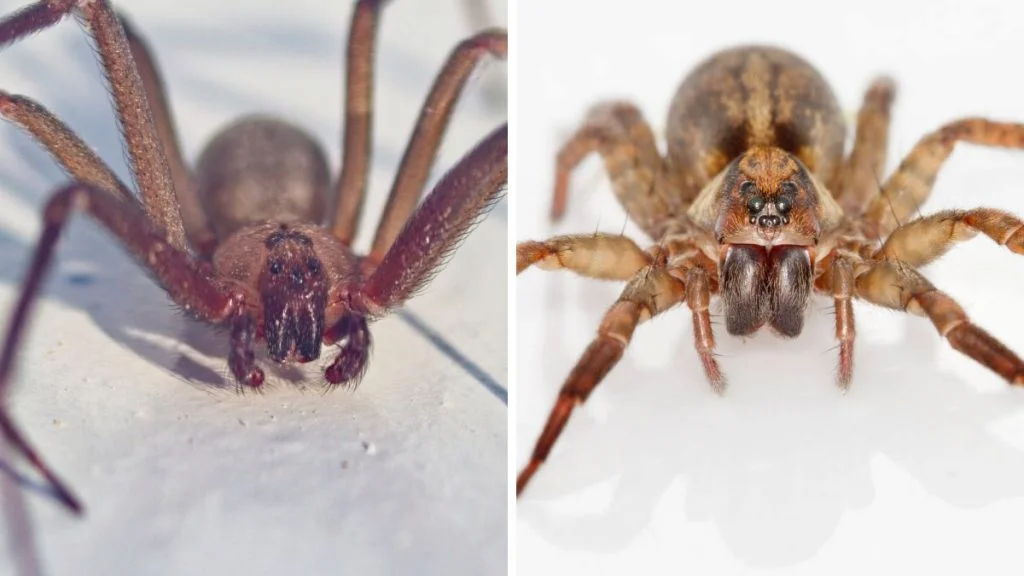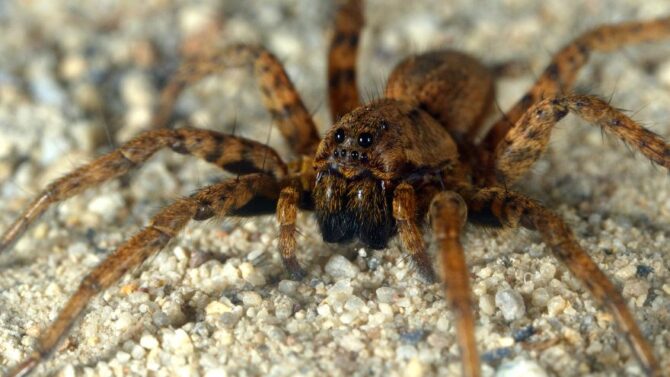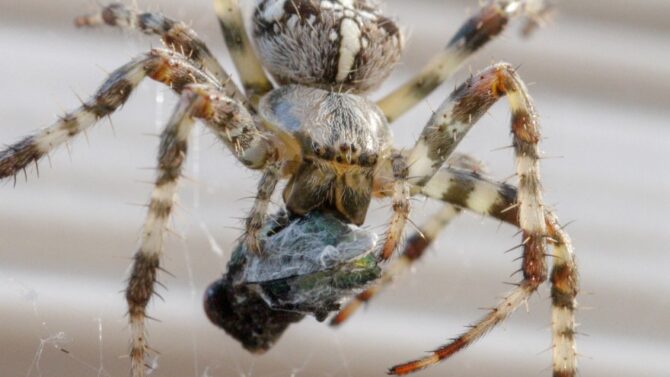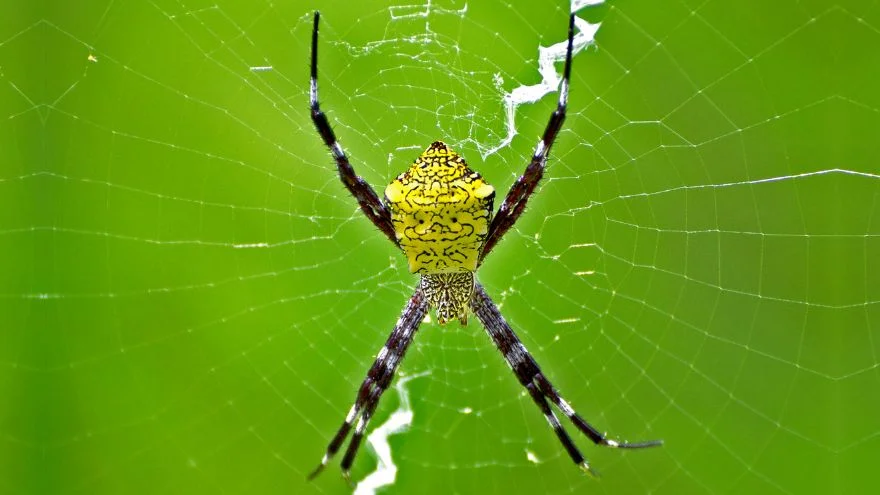As it often is with these arachnids, spotting the differences between brown recluse vs wolf spider can be tough. Both species are two spiders amongst many others.
It is necessary, though, as the brown recluse spider is notorious for being highly poisonous while the wolf spider will only leave a mark.
There are a few differences between brown recluse spider and wolf spider in size, habitat, color, and even the level of venom. While it may not be visible at surface level, these spiders are unique in their ways.
Read on to learn more about both species and how to spot them.
Brown Recluse Vs Wolf Spiders: Comparison & Facts
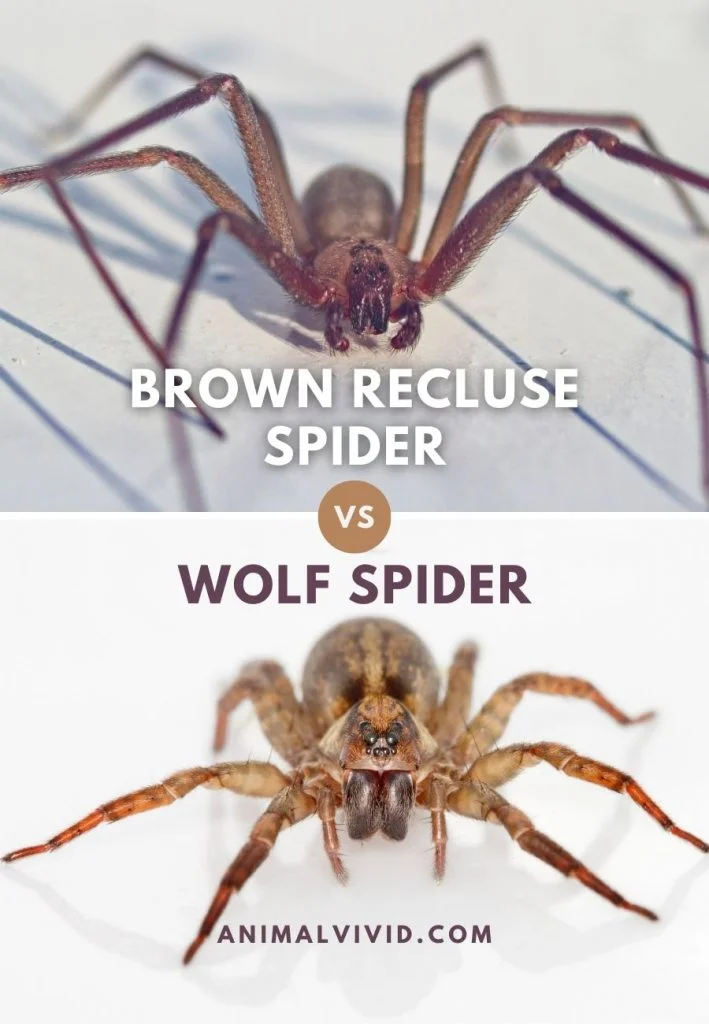
Brown Recluse Spider
- Scientific Name: Loxosceles reclusa
- Size: 0.24 to 0.79 inch
- Poisonous: High
- Habitat: Human habitation
- Behavior: Shy and reclusive
- Species: 1
- Range: Midwestern to Southern U.S
- Web: Yes
- Color: Brown
Wolf Spider
- Scientific Name: Lycosidae
- Size: 0.5 to 1 inch
- Poisonous: Low
- Habitat: Deserts, homes, grasslands, etc.
- Behavior: Aggressive
- Species: 2500
- Range: Worldwide
- Web: No
- Color: Gray, brown, black, buff
Brown Recluse Spider Overview
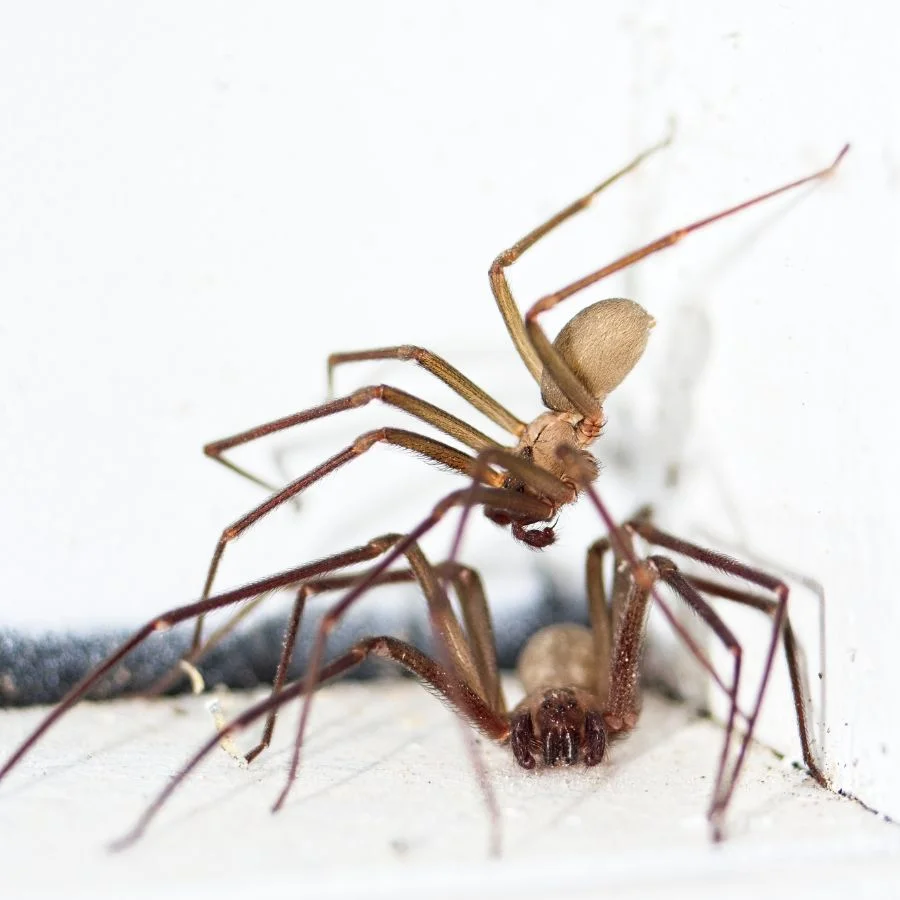
The brown recluse spider was first categorized under the family Loxoscelidae before being moved into the Sicariidae.
While all spiders can bite, some require medical attention. In North America, the brown recluse is one out of three spider species that are this dangerous.
The black widow and the Chilean recluse are others. The brown recluse is nicknamed the violin spider, brown fiddler, or fiddle back spider because of the black sign at its back that looks like a violin.
The brown recluse spider is not spread worldwide, and its range is limited to the Americas. The preferred habitat is around the human residence, and it would spin webs in garages, sheds, closets, etc.
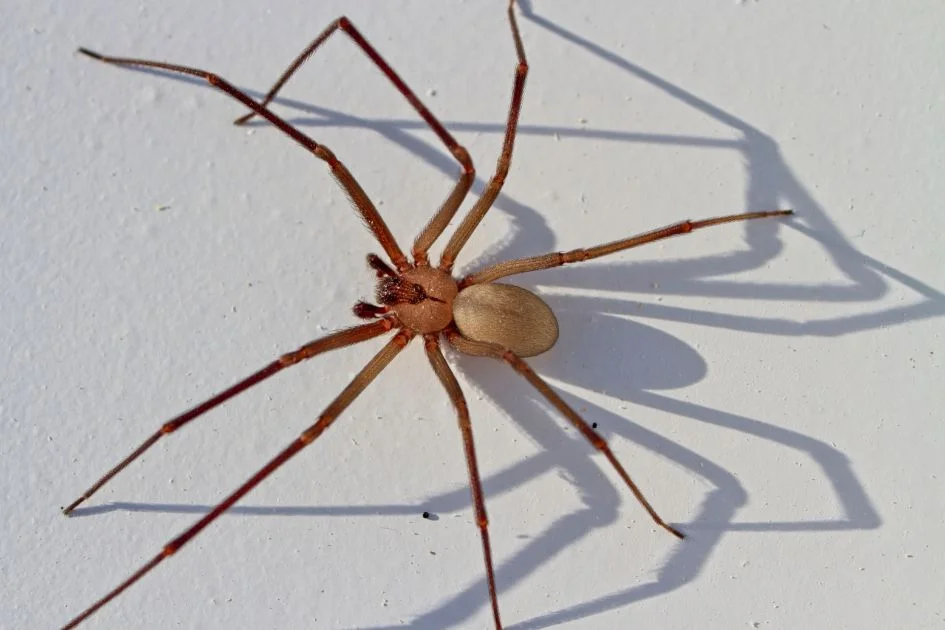
You should be careful when approaching a brown recluse, but generally, the spider behaves as its name suggests. It is reclusive and avoids human contact. It will only use its venom when threatened.
This species is carnivorous and a hunter. It doesn’t just wait for prey like other web spinners, but actively hunts them at night.
Wolf Spider Overview
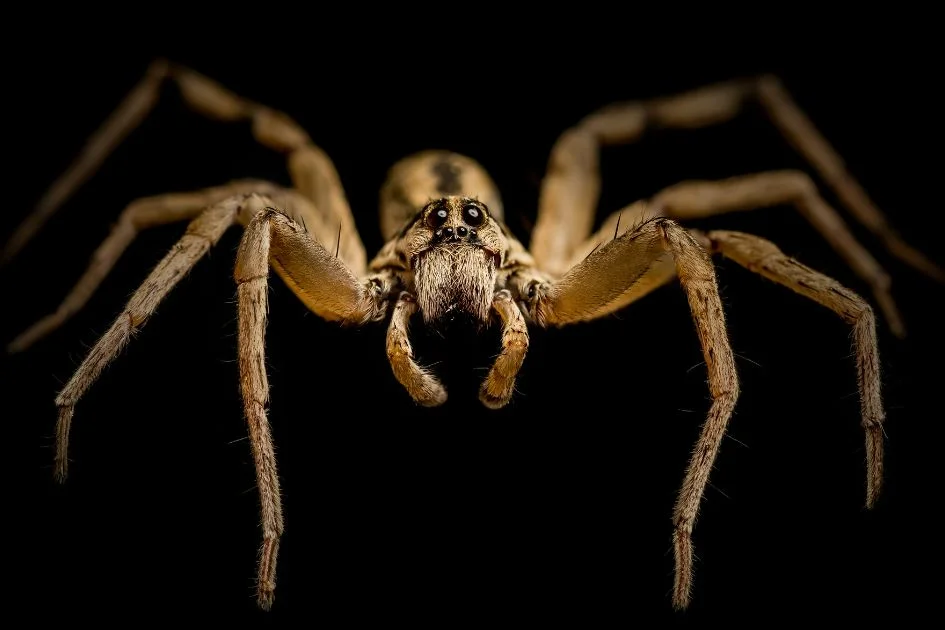
The wolf spider is from the family Lycosidae, a word that’s derived from lúkos which stands for a wolf.
Its range is worldwide, and it lives in many habitats like shrublands, alpine meadows, suburban gardens, and human homes. Wolf spiders look dangerous and can be aggressive, but their bite isn’t fatal.
This species doesn’t spin webs as many other spiders do, so they rely on their aggression to trap prey. They are strong predators and often chase prey and catch.

This doesn’t mean they can’t be opportunistic, though. Some wolf spiders prefer hiding and waiting for the prey to come close.
Their main diet is insects, and because of that, they’re considered in controlling the insect population (of course, so do many other spiders), including pest bugs in gardens.
Similarities and Differences Between Brown Recluse Vs Wolf Spider
The overview of both spider species gives us some hints as to their similarities and differences. We’ll explore this further in seven categories:
Appearance
The brown recluse spider and wolf spider both look similar in appearance, and this is the main reason people assume both are the same.
Both spiders have eight legs and their bodies are divided into two sections. The first difference in their appearance is in thickness and hair.
The wolf spider is thicker than the brown recluse spider and is also hairier. You may not notice any hair on the latter unless you peer in closely (not advisable). The wolf spider also has more eyes, up to 8. The brown recluse totals at 6.
One last difference between both spider species is the violin sign on the brown recluse spider that’s missing on the wolf spider.
Size and Color
Wolf spiders tend to be bigger than the brown recluse spiders, but this isn’t an absolute rule as some brown recluse spiders are bigger than wolf spiders.
The wolf spider is generally bigger as it measures between 0.5 to 1 inch while the brown recluse spider measures between 0.24 and 0.79 inches.
Color-wise, the brown recluse is as its name goes—a total brown. Wolf spiders can also be brown, but they’re not limited to that. Gray, black, and buff are some other color variations.
Family and Species
The spiders come from different families, the wolf spider is from the Lycosidae while the brown recluse spider is from the Loxoscelidae. Each family has a set of expectations that distinguishes it from the other.
The brown recluse is also just one specie, but that’s not the case with the wolf spider. There is an estimate of 2,500 wolf spider species in the world.
Behavior
Web spinning is considered a behavior amongst spiders, so we will kick off from here. The brown recluse spider is a web spinner but the wolf spider isn’t.
The brown recluse spider web is a home, but not necessarily a trap for prey. It hunts just like the wolf spider and doesn’t need to wait for an insect to get trapped in its web.
Levels of aggressiveness differ significantly. The brown recluse is shy and withdraws from humans, but the wolf spider may show more aggressiveness. Of course, this doesn’t mean the wolf spider is more dangerous.
Danger
The brown recluse may be shy and reserved, but it is more dangerous than a wolf spider. While the wolf spider’s bite will only cause discomfort, the brown recluse spider’s bite has necrosis properties that can be damaging.
That said, the chances of getting bit by a brown recluse are lower than that of the wolf spider. The brown recluse is greatly feared, and sometimes its danger is exaggerated. This spider is more likely to mind its business than bite.
Not all of its bites are life-threatening too. Some heal on their own, others would need medical attention but aren’t fatal.
As a general rule, if you get bit by a spider and you’re not sure which specie is responsible, get it checked by a doctor immediately.
Range and Habitat
The brown recluse has a more limited range. It can mainly be found in North America, and not even in all countries. The wolf spider with its many species can be found all over the world.
The brown recluse has a limited habitat too. It dwells in human residence. Wolf spiders can be found in homes too, but it also lives in deserts, grasslands, and more.
Reproduction
The male of both species both court the females before mating. The male brown recluse employs different tactics to woo the females, and it even dances. The female gets to decide if she’s interested.
The wolf spider’s courtship style is more outlandish than dancing (though it does dance). The male does what seems to be a courtship song to attract the female.
He has to be outlandish because his life depends on it, literally. If the female rejects the offer, she may eat the male. The same rule applies if his mating performance is poor. Male wolf spiders don’t have it easy.
Female wolf spiders carry their egg case in a spinneret, and when the eggs hatch, the babies stay on her back. Female brown recluse uses an egg sac, but don’t carry their hatched babies on the back.
Also See:
Hobo Spider Vs Wolf Spider: 5 Differences & Similarities
Related Questions
Do brown recluse spiders kill wolf spiders?
Spiders are known to kill each other, but there have been no cases of a brown recluse spider killing a wolf spider, and vice versa. These species tend to not cross paths.
What spiders can be mistaken for a brown recluse?
A lot of spiders look alike, and so many can be mistaken for a brown recluse. An example is the huntsman spider that has its legs positioned like the recluse, in a crabwise manner.
Summary
The brown recluse and wolf spider are not the same, nor are they related.
These spiders have a few similarities in appearance, but they differ both in appearance and in many other aspects like behavior, venom risk, and size.
Featured Image Credit: PeteMuller, ssiltane / Getty Images Signature
